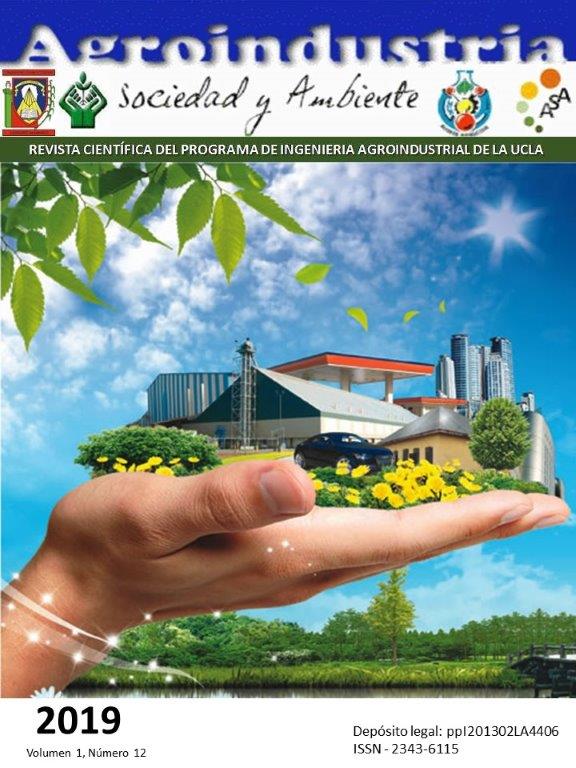Technologies for the obtaining of sodium chloride (NACL) pharmaceutical degree
Keywords:
Sodium chloride, purification technologies, raw material, USP grade, patentsAbstract
The sodium chloride (NaCl) pharmaceutical grade, is a salt that has a particularly high quality and high purity (99.8%), is involved in the elaboration of multiple products in the pharmaceutical and food industry, considered as an essential raw material for the daily life of the human being. The main objective of the research was to identify the most optimal technologies for obtaining. The methodology used was through the use of keywords for the construction of patent search strategies, using platforms such as The Lens, Web of Science and Carrot2; obtaining bibliometric and patentedometric indicators. Among the results obtained suggest that the high vacuum evaporation technique has the greatest application for the purification of sodium chloride due to its high purity, low operational consumption, lower environmental impact and high yields. Currently, many countries have focused on developing technology to obtain higher yields and greater benefits from other products present. It should be noted that Venezuela has natural sources of the mineral, therefore it is necessary to promote the production of sodium chloride as a raw material in different sectors such as pharmaceutical and industrial.
Downloads
References
Bakkenes, H., Maria, J. y Schokker, A. (2008). Sodium chloride production process. Akzo Nobel Chemicals International BV. Patent US8771380B2. Estados Unidos.
Bizont, J. y Sausse, A. (1971). Purification of a chloride solution. Hospal Industrie SA. Patent US3935092A. Estados Unidos.
Chirico, Anthony. (1977). Process for recovery of chemicals from saline water. Ecodyne Corp. Patent US4180547A. Estados Unidos.
Corona, I., Trejo, V. y Gama, I. (2014). Pequeñas Industrias Productoras de Sal en México. Universidad Autónoma del Estado de Hidalgo. Ingeniería Metalúrgica. Procesamiento de Minerales No Metálicos II. México.
Deveson, Byron. (2001). A method of producing salt. Deveson, Byron. Patent WO2002006158. Australia.
García, Miguel. (2010). Tratamiento de aguas Residuales. Bloque III Tratamiento Especifico de Vertidos industriales. Departamento de ingeniería química. Facultad de Ciencias. Granada.
Geerman, R.M. (2000). Sodium chloride: Crystallization. Prensa Académica, Países Bajos, VOL (3): 4127- 4134.
Geesen, Donald. (1979). Method of concentrating an aqueous solution by multiple effect evaporating. PPG Industries Canada Ltd. Patent US4231840A. Canadá.
Griem, W. (2016). Apuntes Geología General: Ambiente sedimentario La sal. [En línea] Museo Virtual Geología, Chile. Disponible: http://www.geovirtual2.cl/geologiageneral/ggcap05f.htm [Consulta 2017, Agosto 04].
Hong, Jeong-Ho. (2004). Distillation or Evaporation Method and Equipment for Salt Water or Sort of Fluid by Reheated Steam at Multiple Effect Evaporation System with Chamber of Horizontal Plate Type Heat Exchanger. Hong, Jeong-Patent US20080017326A1. Estados Unidos.
Instituto Nacional de Propiedad Industrial (INAPI). (2016). ¿Qué son las Patentes?. Artículo informativo. No. 744. Santiago de Chile. Pp 1-2.
Kim Hyun Joong, Kim Hong Chul y Jun Kyung Il. (2012). Heating Assembly for Vacuum Deposition. Patent EP2711442B1. Ceko Co., Ltd. China.
Lawrence, F., Currey, John y Hoeve, R. (1997). Evaporative salt plant. Texas Brine Corporation. Patent EP0604718B. Estados Unidos.
Luo, J., Lin, M., Lin, B., Wenrun, Y., Qin, Y. y Dend, J. (2007). Method of purifying a salt, sodium salt and disodium salt of pemetrexed. Chongqing Pharmaceutical Research Institute Co Ltd. Patent US68614B2. Estados Unidos.
Murayama, Yoichi. (1974). High vacuum ion plating device. Murayama, Yoichu. Patent US3974059A. Estados Unidos.
Pandelis N., Papafingos, R. y Lance, T. (1976). Recovering chloride flux salts for aluminum. Alumax Mill Products Inc. Patent US4060118A. Estados Unidos.
Ponte, C. y Millan, Z. Salina de Pampatar: Reminiscencias. Revista de Investigación Nº 88 Vol. 40 Mayo-Agosto. Universidad Pedagógica Experimental Libertador, Instituto Pedagógico de Caracas, Venezuela.
Quezada, Roselys. (2011). Las Salinas De Araya En El Contexto Colonial Y Republicano (siglos XVI al XIX). Universidad Católica Andrés Bello Dirección General de los Estudios de Postgrado Maestría en Historia de Venezuela.
Reid, Jensen. (1995). The Salt Recovery Process. Artículo Dominion Salt Limited. Universidad de Auckland. Nueva Zelanda. Pp 1-9.
Sadan, Abraham. (1991). Process for crystallizing inorganic salts. Patente US5447543A. Exportadora De Sal, S.A. De C.V.México. Estados Unidos.
Velecela, D. (2014). Preparaciones inyectables, técnicas de elaboración y control de calidad. Universidad Técnica de Machala. Facultad de Ciencias Químicas y de la Salud. Carrera de Bioquímica y farmacia. Control de Medicamentos. Ecuador.
Wallace, Paul. (2017). System for removing high purity salt from a brine. Enviro Water Minerals Company, Inc. Patent US9737827B2. Estados Unidos.
World Intellectual Property Organization (WIPO) (2017). Clasificación Internacional de Patentes (ICP). 2017. [En línea] Disponible http://www.wipo.int/classifications/ipc/es/ [Consulta 2017, Octube 05].
Yamazaki, K. y Miwa, T. (1980). Concentrator system. Daicel Corp. Patent US4504355A. Estados Unidos.
Published
How to Cite
Issue
Section




